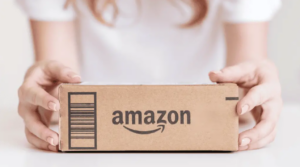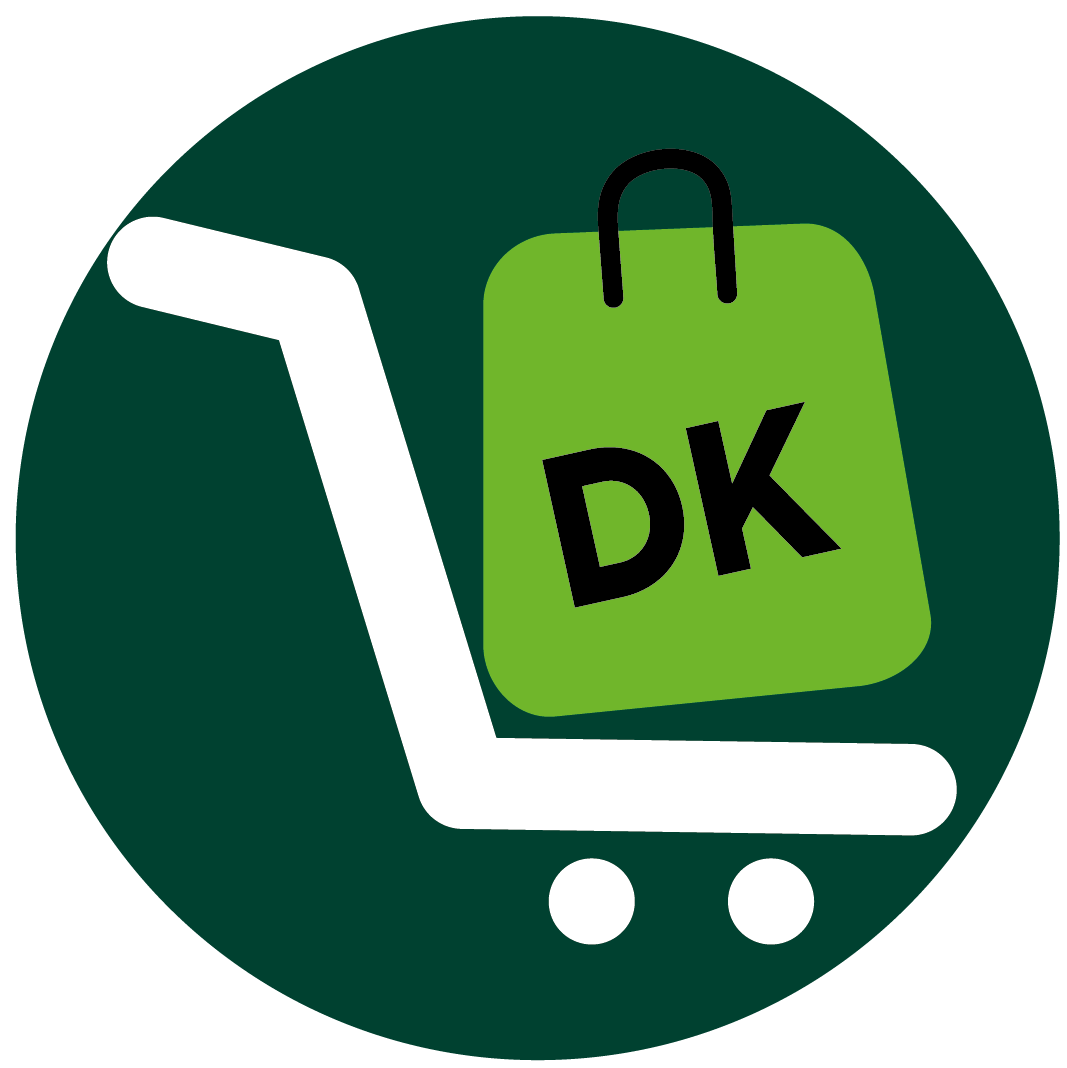Introduction
Want a lucrative business model where you sell only top-quality, high-value products without stocking inventory? Instead of focusing on cheap goods, target premium items like luxury watches, electronics, or designer clothing. Enjoy bigger profits with fewer competitors and provide individual service to affluent customers.
1. Understand High-Ticket Dropshipping
2. Identify a Profitable Niche for High-Ticket Dropshipping
3. Get Product Ideas for High-Ticket Dropshipping
4. Make Legal and Financial Considerations
5. Build Your High-Ticket Dropshipping Online Store
6. Source High-Ticket Dropshipping Products
7. Begin Marketing and Branding
Pros & Cons of High-Ticket Dropshipping
Pro Tips
Recap
1. Understand High-Ticket Dropshipping
Sell pricey products online without managing inventory or shipping. Rather, concentrate on marketing and customer service while leaving fulfillment to your suppliers. In high-ticket dropshipping, quality matters more than quantity; target niche markets willing to pay more for top-notch goods.
Pros
- Offers higher profit margins due to selling fewer items at higher prices
- Focuses on quality and customer satisfaction
- Lacks the need to handle inventory or shipping
Cons
- Requires thorough research and reliable supplier relationships
- Involves high risk with expensive products
- Limits your customer base due to targeting niche markets
To succeed, you need to research extensively, build strong relationships with suppliers, and prioritize customer satisfaction. Focus on delivering value to customers willing to invest in premium products.
>>> MORE : How to Start a Dropshipping Business
2. Identify a Profitable Niche for High-Ticket Dropshipping
Research market trends and consumer preferences to spot demand. Use tools like Google Keyword Planner to find high-value keywords, and assess profit potential. Analyze competitors to understand the market landscape, differentiate your offering, and choose a niche suitable for your interests and expertise. Define your target audience using demographics and spending capacity.
Pros
- Ensures that your business caters to specific consumer needs, increasing relevance and appeal
- Helps you tap into niches with increasing demand, facilitating business growth and profitability.
- Allows for strategic decision-making, focusing on niches that promise higher returns on investment.
Cons
- Has a smaller customer base, potentially limiting scalability and revenue growth compared to broader markets
- Requires continuous adaptation and investment in research and development.
- Relies on reliable suppliers for product quality and timely delivery, posing a risk if suppliers fail to meet expectations
- Explore current market trends and consumer preferences to identify niches with growing demand.
- Utilize tools like Google Keyword Planner or Ahrefs to discover relevant keywords in connection with high-ticket products. Focus on keywords with substantial search volumes.
- Evaluate potential profit margins for different niches to determine which ones offer you better returns on investment.
- Examine your competitors’ websites, product offerings, pricing strategies, and customer reviews to analyze existing players in your niche.
- Understand the strengths and weaknesses of your competitors to position yourself in the market effectively.
- Choose a niche, considering factors such as your interests, passions, expertise, profit potential, competition level, and target audience.
- Define your target audience clearly, using factors such as age group, demographics, interests, and spending capacity.
3. Get Product Ideas for High-Ticket Dropshipping
Choose luxury watches and jewelry for timeless appeal and high profits. Famous brands like Rolex attract affluent customers seeking prestige, while fine jewelry offers luxury and sophistication. Opt for designer clothing and accessories to tap into exclusive style demand. Brands like Gucci promise high returns, appealing to luxury consumers who prioritize quality.
Embrace high-end electronics for technological prowess and premium pricing, offering brands like Apple for innovation. Select luxury home decor for aesthetics and functionality, catering to affluent homeowners. Focus on unique items like custom jewelry and made-to-measure clothing to meet individual preferences.
Pros
- Provides your customers with unique luxury experiences that resonate on a personal level and foster brand loyalty
- Offers access to exclusive designer brands, allowing for higher profit margins and establishing your dropshipping business as a premium destination for fashion enthusiasts
- Provides a lucrative opportunity for you to tap into the affluent market segment, where customers are willing to invest significantly in luxury items
Cons
- Involves higher upfront investment due to the expensive nature of luxury items, which can pose financial risks if sales don’t meet expectations
- Enables you to encounter challenges with counterfeit products or unreliable sellers, leading to potential brand reputation damage and legal issues.
- Requires staying current with rapidly evolving technology trends, which can be demanding in terms of research and sourcing reliable suppliers for electronic products.
For luxury watches and jewelry, offer iconic brands such as Rolex, Patek Philippe, and Cartier for watches, along with fine jewelry featuring diamonds, gemstones, and precious metals. In high-end electronics, feature flagship smartphones from Apple, Samsung, or Google, and provide premium laptops, tablets, and noise-canceling headphones.
In home decor and furniture, offer custom furniture and luxury home accessories, showcasing unique designs and high-quality materials. For customized or personalized items, provide custom jewelry, monogrammic accessories, and made-to-measure clothing, catering to individual preferences and offering personalized options.
Lastly, stock designer clothing and accessories, including high-end fashion labels like Gucci, Prada, and Louis Vuitton, along with designer handbags, sunglasses, and scarves.
4. Make Legal and Financial Considerations
Establish a solid foundation for your business. Register your business and obtain licenses to ensure its legality and credibility. Select the appropriate legal structure that clarifies liabilities and tax obligations. Understand your tax responsibilities to prevent future legal issues.
Maintain accurate records to facilitate financial transparency and decision-making. Manage your finances effectively to make sure your business experiences stability and growth.
Pros
- Ensures legitimacy and credibility for your business
- Secures your business identity and facilitates financial transactions
- Prevents legal setbacks and penalties
Cons
- Entails bureaucratic hurdles and paperwork sometimes
- Requires careful research and understanding of complex legal structures
- Demands meticulous record-keeping
Register your business name legally with appropriate authorities and apply for an Employer Identification Number (EIN) from the IRS for tax purposes. Research and obtain necessary licenses or permits based on your location and business type. Decide on a legal structure like Sole Proprietorship, LLC, or Corporation, understanding each one’s benefits and responsibilities.
Be aware of tax obligations, including sales tax laws, consulting with professionals if necessary, and accounting for import duties if you are dropshipping internationally. Maintain accurate records of your transactions, and consider using accounting software or hiring an accountant. Manage finances—open a separate business bank account, create a budget, calculate profit margins, and set up secure payment gateways.
5. Build Your High-Ticket Dropshipping Online Store
Choose Shopify for its user-friendly interface, extensive app selection, and scalability. Opt for WooCommerce on WordPress for control and flexibility. Consider Magento for its extensive features suitable for larger enterprises, albeit requiring technical expertise. Craft a professional website with a consistent brand identity, clear navigation, and high-resolution product images.
Prioritize mobile optimization for an easy user experience. Ensure secure transactions with trustworthy payment gateways like Stripe, PayPal, or Authorize.Net, with SSL certificates and trust badges.
Pros
- Offers user-friendly platforms for easy setup and scalability.
- Showcases high-ticket items effectively with high-resolution images and detailed descriptions.
- Ensures mobile optimization and fast loading times for enhanced user experience
Cons
- Locks you into a specific platform, limiting your flexibility and potential customization options.
- Requires additional expenses in some cases for premium themes, plugins, and apps, increasing overall costs.
- Faces scalability issues as your business grows due to platform limitations or increased fees for higher usage levels.
For your e-commerce venture, consider utilizing platforms like WooCommerce, Shopify, or Magento to build your online store. Ensure your website has a professional design with a strong brand identity, including a professional logo and consistent color palette and typography.
Organize your website with clear navigation and logical product organization for a clutter-free design. Showcase your products with high-resolution images, descriptions in detail, and emphasis on unique features.
Optimize your website for mobile devices using responsive design, clear images, and testing on various devices. Implement secure payment gateways such as PayPal or Stripe and display trust badges like SSL certificates and secure checkout icons to reassure customers during the payment process.
6. Source High-Ticket Dropshipping Products
Receive products from reputable suppliers via platforms like AliExpress, SaleHoo, or Oberlo to ensure quality and reliability. Get bulk discounts and favorable shipping terms that maximize your profit. Customize products using private labeling or white-labeling to gain brand control and recognition.
Prioritize product quality, reliability, and strong supplier relationships to guarantee customer satisfaction and business success.
Pros
- Offers a wide selection of high-ticket products from reputable suppliers
- Allows for thorough evaluation of suppliers, relying on product range, shipping times, and customer reviews
- Facilitates negotiation for bulk discounts, favorable shipping terms, and payment conditions
Cons
- Limits control over product quality and shipping times
- Increases the risk of receiving counterfeit or low-quality products from suppliers
- Requires substantial upfront investment in bulk purchases and customization for private labeling
Conduct supplier research using platforms like AliExpress, SaleHoo, or Oberlo to find reputable suppliers specializing in high-ticket products. Evaluate factors such as product range, shipping times, and customer reviews to ensure reliability and reputation. Negotiate with suppliers, leveraging bulk discounts for high-ticket items, understanding shipping costs and delivery times, clarifying payment terms, and inquiring about quality control processes.
Explore private labeling options to customize products with your logo, packaging, and unique features, enjoying benefits like brand recognition and control over product quality. Alternatively, consider white-labeling for faster time-to-market and less investment, particularly for market testing or startup ventures. Prioritize product quality and reliability–ordering samples, defining quality standards in supplier agreements, monitoring customer reviews, and selecting suppliers with reliable shipping methods for timely delivery.
>>> PRO TIPS : How To Sell Online Without Inventory
7. Begin Marketing and Branding
With strategic branding, a memorable logo, and consistent messaging, you stand out in the high-ticket dropshipping market. Spell out product descriptions and professional imagery to enhance customer trust and desire.
Leverage social media, content marketing, and target advertising to ensure a broad reach and engagement. Stay consistent across all channels to build a strong, recognizable brand that resonates with your audience and drives sales.
Pros
- Establishes a distinct brand identity
- Creates a cohesive visual representation across all platforms, reinforcing brand recognition.
- Enhances product understanding and desire
Cons
- Creates a risk of overspending on branding efforts without a clear understanding of ROI and budget constraints.
- Drains resources if you prioritize professional product photography over other essential aspects of the business.
- Leads to ineffective use of social media platforms if the select ones don’t align with the target audience’s preferences or behaviors.
To establish a strong brand identity, craft a distinctive logo that reflects your brand, ensuring consistency in colors, fonts, and imagery across all platforms. Define your tone, whether it’s professional, friendly, or luxurious, and maintain consistent communication in your tone across all channels. Build an engaging “About Us” page that shares your story, values, and mission, connecting with your audience personally through storytelling.
For product descriptions and images, ensure specificity and clarity, highlighting features, benefits, and unique selling points while preemptively addressing potential customer questions. Invest in professional product photography, showcasing various angles and lifestyle shots to enhance your customer experience. Prioritize quick loading times for images on your website, and consider incorporating 360-degree views or videos for an even more engaging presentation.
Utilize social media marketing on platforms like Instagram, Pinterest, and others to share visually appealing content, engage with followers, and respond promptly. Implement content marketing with a blog on your website, sharing valuable articles and insights on social media while optimizing for SEO. Explore paid advertising options, including Google Ads for high-intent keywords, Facebook Ads for precise audience targeting, and influencer collaborations to expand your reach
Pros & Cons of High-Ticket Dropshipping

Pros
- Offers larger profit margins due to the significant price difference between purchase and sale.
- Allows for better spreading of operating costs, resulting in increased profitability despite selling fewer items.
- Capitalizes on the perceptual value of expensive products, leading customers to pay more and boosting margins.
Cons
- Carries a higher risk due to the necessity of a larger upfront investment
- Exposes your business to market volatility
- Involves a longer sales cycle
>>> GET SMARTER : Best Dropshipping Suppliers for Wix
Pro Tips

Thorough Research: Invest ample time in researching market trends, consumer preferences, and potential niches.
Profitable Niches: Focus on niche markets with growing demand and higher profit potential. Analyze competitors to understand market dynamics and differentiate your offerings effectively.
Quality over Quantity: Emphasize quality and customer satisfaction in your high-ticket dropshipping business. Prioritize building strong relationships with reliable suppliers to ensure top-notch product quality and timely delivery.
Luxury Products: Select luxury products with timeless appeal and high-profit margins. Opt for reputable brands and consider customization options like private labeling to enhance brand recognition and exclusivity.
Legal and Financial Compliance: Register your business legally, obtain necessary licenses, and choose a suitable legal structure. Understand tax obligations and maintain accurate financial records to ensure stability and compliance.
Recap
High-ticket dropshipping offers a very profitable opportunity to sell premium products without inventory management. With careful niche selection, strong supplier relationships, and strategic branding, your high-ticket dropshipping business can thrive.
While it promises higher profits and customer loyalty, it requires significant upfront investment and meticulous attention to quality and customer service. Its challenges include market volatility and dependency on suppliers. Despite limitations in scalability and longer sales cycles, its advantages in profit margins and direct marketing outweigh the cons. Success lies in thorough research, consistent branding, and effective marketing across multiple channels.














